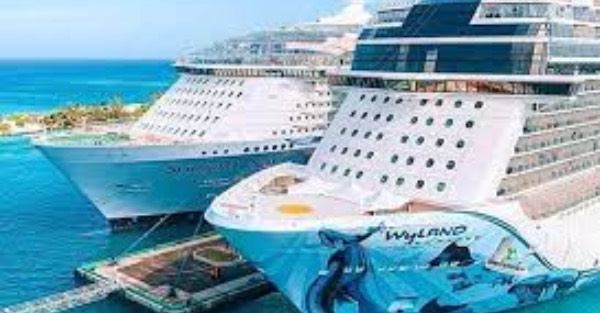Norwegian Breakaway and Norwegian Getaway’s Hybrid Exhaust Gas Cleaning Systems Commissioned Nearly Two Years Ahead of Schedule
Approximately 70% of Company’s Operational Capacity Now Equipped with Innovative EGCS Technology
Norwegian Cruise Line Holdings Ltd., a leading global cruise company which operates Norwegian Cruise Line, Oceania Cruises and Regent Seven Seas Cruises, announced the successful completion of its nearly $200 million, multi-year investment in exhaust gas cleaning systems on certain ships across its fleet with the successful commissioning of EGCS onboard Norwegian Breakaway and Norwegian Getaway. The new systems are aimed at improving the ships’ environmental footprint by significantly reducing emissions, including sulfur oxides and particulate matter, and improving air quality. Investments in technology such as EGCS are an integral part of the Company’s long-term climate action strategy and the Company is committed to continually exploring additional avenues to further reduce its footprint and protect and preserve the environment.
“We are pleased to announce that our ambitious multi-year investment to install exhaust gas cleaning systems on our ships has concluded with the successful completion of EGCS retrofits on the Norwegian Breakaway and Norwegian Getaway,” said Frank Del Rio, president and chief executive officer of Norwegian Cruise Line Holdings Ltd. “We took the opportunity during the COVID-19 pandemic related voyage suspension to accelerate installations on existing ships and complete this project nearly two years ahead of schedule. Approximately 70% of our operational capacity, or 13 ships, are now equipped with this innovative environmental technology and all but one ship is equipped with a hybrid system which can operate in closed or open loop. The EGCS project is just one of many examples of our ongoing commitment to protect and preserve the environment through our global sustainability program, Sail & Sustain, and we will continue to invest in this critical mission.”
“Protecting the environment is vital to our business and we continually seek and invest in new, cutting-edge technologies and innovations, like exhaust gas cleaning systems, to reduce our environmental impact,” said Giovanni Canu, vice president special projects and operational support of Norwegian Cruise Line Holdings Ltd. “This incredible feat began with our first EGCS retrofit in early 2014 and would not have been possible without the help and support of our world-class team and the numerous external partners who came together on this project. Retrofitting for each ship required approximately 280,000 man hours to complete and we want to thank each individual who contributed to the success of this important environmental achievement for Norwegian.”
The Company has completed EGCS installations on 13 Norwegian Cruise Line ships which represent approximately 70% of operational capacity. EGCS, commonly referred to as scrubbers, work by “scrubbing away” sulfur oxides (“SOx”) and particulate matter before the emissions leave the stack to decrease the amount that is released into the air, resulting in a clean white plume of steam. Ships equipped with this technology can reduce SOx emissions by up to 98%. 92% of systems installed on the Company’s ships can operate in open or closed loop, which is known as a hybrid system. This allows the ships to operate the systems within compliance in expanded areas of the world. Ships with EGCS technology can use heavy fuel oil (“HFO”) instead of low-sulfur marine gas oil (“MGO”) as their primary fuel source. According to the International Maritime Organization’s Third IMO Greenhouse Gas Study, the CO2 emissions factor for HFO is less than for MGO on average which should result in lower relative CO2emissions as the Company increases its mix of HFO consumption. The Company expects its normalized fuel consumption mix will now be approximately 50% heavy fuel oil (“HFO”) and 50% MGO in 2022.









































